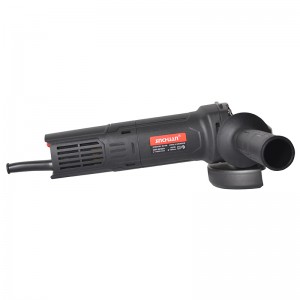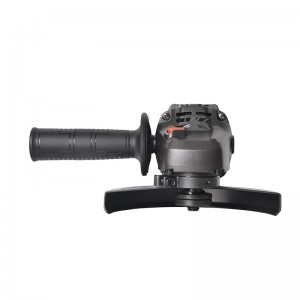In the world of power tools, safety and performance are paramount. Whether you’re a professional tradesperson or a DIY enthusiast, the reliability and durability of your tools can significantly impact your work. Two critical aspects that often go overlooked but are essential for both safety and performance are the protective guard reinforcement and motor cooling design. This blog post will delve into these two areas, exploring how they can be enhanced to improve the overall functionality and longevity of electric tools.
The Importance of Protective Guards
Protective guards are a crucial safety feature in power tools, designed to shield users from moving parts and prevent accidents. However, not all guards are created equal. A well-designed protective guard can significantly enhance user safety and tool performance. Here are some ways to reinforce protective guards:
1. Material Selection
Choosing the right material for protective guards is essential. High-strength polymers and reinforced composites offer excellent durability and impact resistance. These materials can withstand the rigors of daily use and protect against accidental contact with moving parts. Additionally, transparent materials like polycarbonate can provide clear visibility while maintaining safety.
2. Design Enhancements
The design of the protective guard should be both functional and ergonomic. Guards should be easy to install and remove for maintenance without compromising safety. Features like quick-release mechanisms and adjustable brackets can make the guards user-friendly. Moreover, guards should be designed to fit snugly around the tool, ensuring no gaps that could allow debris or fingers to come into contact with moving parts.
3. Customization
Different tools require different guard designs. Customizing guards to fit specific tools ensures optimal protection. For example, a circular saw might need a guard that covers the blade while allowing for precise cutting, whereas a grinder might require a guard that can handle sparks and debris. Customization ensures that the guard meets the unique needs of each tool.
Motor Cooling Design
The motor is the heart of any power tool, and its performance is directly affected by its operating temperature. Overheating can lead to reduced efficiency, premature wear, and even motor failure. Effective motor cooling design is crucial for maintaining optimal performance and extending the life of the tool. Here are some strategies for enhancing motor cooling:
1. Advanced Cooling Systems
Incorporating advanced cooling systems can significantly improve motor longevity. Heat sinks, fans, and thermal conductive materials can help dissipate heat more effectively. For example, a small, high-efficiency fan can be integrated into the tool’s design to provide continuous airflow over the motor, keeping it cool during prolonged use.
2. Thermal Management Materials
Using thermal management materials can enhance heat dissipation. Materials like aluminum and copper have high thermal conductivity and can be used in the motor housing to help transfer heat away from the motor. Additionally, thermal pads and heat-conductive adhesives can be used to improve the contact between the motor and cooling components.
3. Design Optimization
Optimizing the design of the motor housing can also improve cooling. Ensuring that there are adequate ventilation channels and that the motor is positioned to maximize airflow can make a significant difference. For example, placing the motor at the end of the tool where it can benefit from natural airflow can help keep it cool.
4. User-Controlled Cooling
In some cases, user-controlled cooling options can be beneficial. For example, a switch that activates a cooling fan can be added to the tool, allowing users to control the cooling process based on their specific needs. This can be particularly useful in high-demand applications where the tool is used continuously.
Combining Safety and Performance
Enhancing both protective guard reinforcement and motor cooling design can significantly improve the overall performance and safety of electric tools. Protective guards not only prevent accidents but also protect the tool from damage, ensuring it remains in optimal condition. Effective motor cooling extends the life of the tool and maintains its performance, even under heavy use.
For international wholesale purchasers and procurement professionals, investing in power tools with advanced protective guards and efficient cooling systems can lead to significant benefits. These enhancements not only improve safety but also reduce downtime and maintenance costs, leading to more efficient operations and higher productivity.
In conclusion, the combination of reinforced protective guards and optimized motor cooling design is a winning strategy for enhancing the safety and performance of electric tools. By focusing on these critical areas, manufacturers can produce tools that are safer, more reliable, and longer-lasting, ultimately providing greater value to their customers.
Post time: Jun-30-2025


